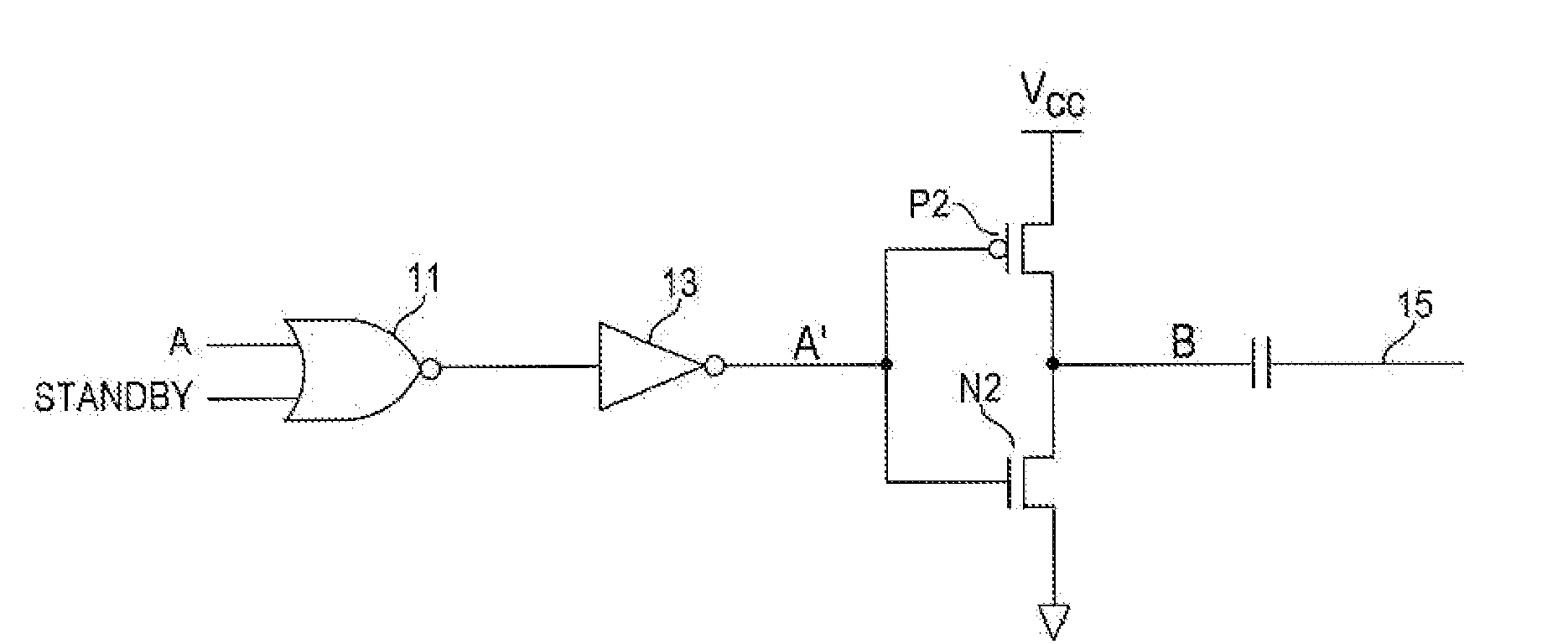Capacitive node isolation for electrostatic discharge circuit
- Summary
- Abstract
- Description
- Claims
- Application Information
AI Technical Summary
Benefits of technology
Problems solved by technology
Method used
Image
Examples
Embodiment Construction
[0011]With reference to FIG. 2, a high capacitive node B can be coupled, for example, to a power supply pin VCC via an active switching element of an integrated circuit, e.g., in this embodiment, a p-channel transistor P2 of a CMOS inverter. Likewise, in this exemplary embodiment, the node B can also be coupled to ground pin of the integrated circuit via another active switching element of the circuit, namely an n-channel transistor N2 of the CMOS inverter. When the inverter's input A′ is at a logic 0 level, the p-channel transistor P2 will be on, coupling the VCC pin to the node B, while the n-channel transistor N2 will be off, isolating the node B from ground. Node B will be pulled up to the VCC voltage level. In contrast, when the inverter's input A′ is at a logic 1 level, the p-channel transistor P2 will be off, so that node B is isolated from the VCC pin, while n-channel transistor N2 will be on, coupling the node B to ground. The inverter shown here is merely exemplary of a ci...
PUM
 Login to View More
Login to View More Abstract
Description
Claims
Application Information
 Login to View More
Login to View More - R&D
- Intellectual Property
- Life Sciences
- Materials
- Tech Scout
- Unparalleled Data Quality
- Higher Quality Content
- 60% Fewer Hallucinations
Browse by: Latest US Patents, China's latest patents, Technical Efficacy Thesaurus, Application Domain, Technology Topic, Popular Technical Reports.
© 2025 PatSnap. All rights reserved.Legal|Privacy policy|Modern Slavery Act Transparency Statement|Sitemap|About US| Contact US: help@patsnap.com


